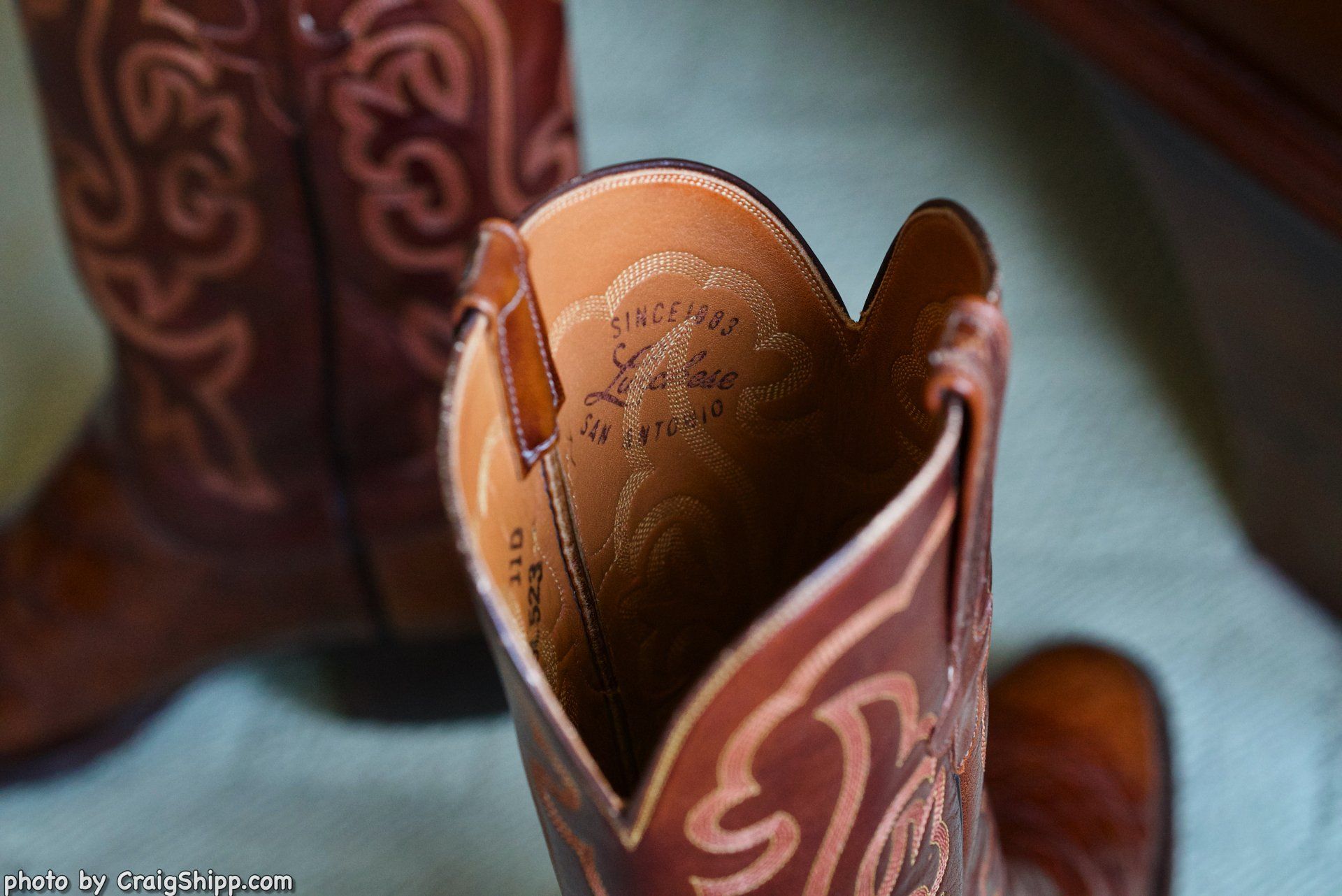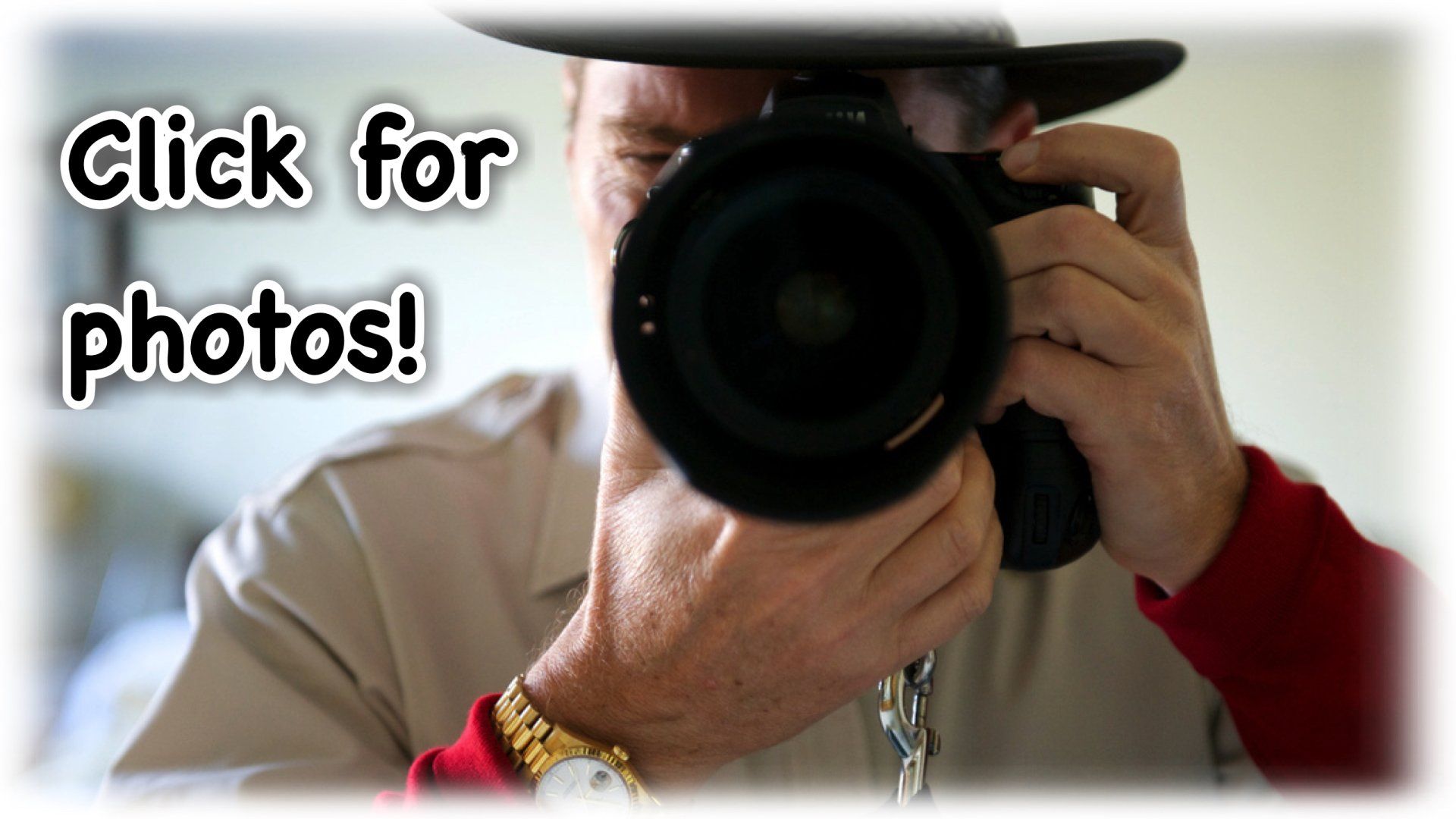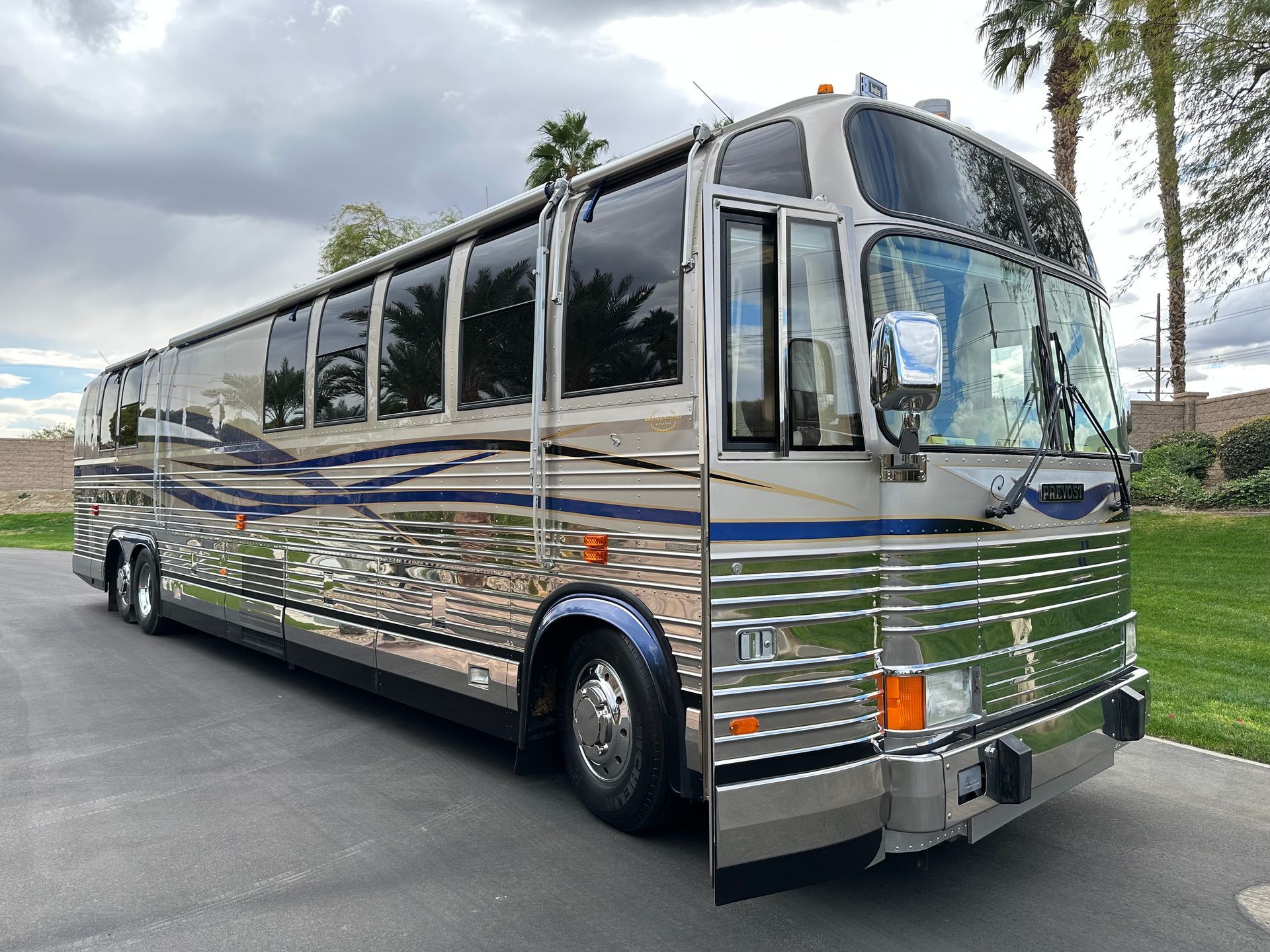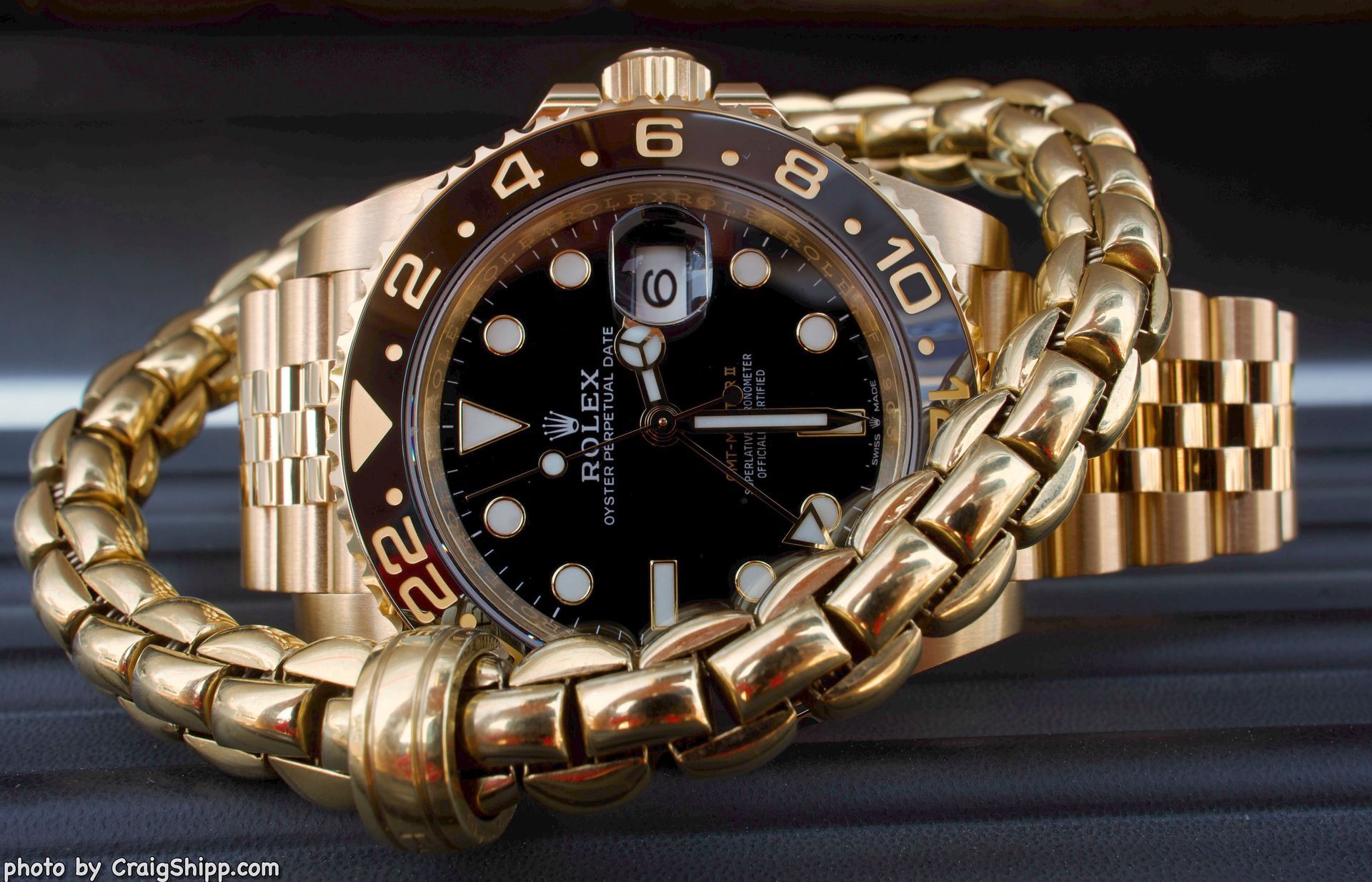Lucchese Boots - USA
Lucchese Bootmakers - Cowboy Boots - USA Quality!

Pictured Above: Lucchese - L0421 6L117 All Ostrich full quill vamp and smooth shaft - San Antonio, TX
Pictured above: Brianna with her four pairs of Lucchese classics: 1) Snakeskin San Antonio; 2) Full quill Ostrich with smooth Ostrich shafts; 3) Full quill Ostrich with smooth Goat shafts; 4) Lizard with smooth Goat shafts. Learn more about Brianna at http://BriFitDance.com
About the various Lucchese product lines - some product lines mentioned may or may not still be in production.
From Lucchese: Lucchese Bootmaker are made up of a few different categories but represent all boots Lucchese makes that are not Classics. Lucchese makes some Bootmaker in El Paso, Texas with a 85 step manufacturing process and they make some in Mexico. A few Bootmaker boots (styles that start with GY) are actually Classics which are made with the Lucchese proprietary 125 step manufacturing process.
Whether Lucchese boots are built by artisans in El Paso or handlasted in one of our other factories, they’re touched more than 300 times by human hands during the boot making process. This attention to detail offers unprecedented fit and value among all of the Lucchese lines.
The Lucchese Since 1883 products are the most affordable boots in the Lucchese line. They offer traditional and fashion styling in silhouettes that evoke the American West. While Select Western boots do not feature lemon wood pegs in the outsole, the do offer a number of handmade details such as embroidery. Styles that begin with the following: C, N, M, T, I may be included in this line.
The Heritage products offer more style options and prestige materials than Select Western styles. These styles feature a number of toe and heel options, unique details like stitching, burnishing, dyes and special hardware. Style numbers begin with H and are made in the USA.
Classic products are made with a customized fit and customized details. This series is the foundation on which Lucchese was built. These styles are handmade, easily customizable and built one pair at a time to exact specifications. Lucchese Classic styles offer luxurious details including burnishing, hand pegging, stitching and exceptional hardware. Lucchese Classic boots bridge the history of old world boot making with new lifestyle brands. The style numbers being with the letters L, GY, E, BL and F.
Collection products are made with the same Lucchese Classic customized fit and customized details. This series is part of our luxury line and are handmade using the proprietary twisted cone last. Collection styles offer luxurious details including burnishing, hand pegging, hand tooling and exceptional hardware that are sold on Lucchese.com and our Lucchese retail stores.
Special Note: I (Craig Shipp) prefer the "Classic" line and IMO the finest boots were made in the original Lucchese factory in San Antonio, TX which closed in about 1986. That said, I have a pair of Classics that were made in the El Paso factory in about 1988 that are also very nice boots.
Here is some Lucchese trivia, little known:
In the mid nineties, Lucchese produced a series of boots that were called the 1883 line. They were basically the same as the "Ranch Hand" boots Lucchese sells today as part of their Classics line. The boots were not labeled 1883 series, and the only way to identify them as such, was knowing how to read the code numbers stamped in the boots. The boots sold for about $300 at full retail, while Lucchese's main line smooth leather goat skin boots were $460 at full retail. The boots had a wider shaft, and looser fitting instep than Lucchese's main line boots. At one point, the boots were made with a full stitched sole, rather than a pegged shank. I am guessing the boots didn't sell well this way as more serious cowboy boot buyers would turn the boots over, not see any pegs, and put the boots back on the shelf. After a while Lucchese started pegging the shanks on this series.
The quality was quite good, and nothing like the 2000 series, or 1883 series of today.
Lucchese was looking to make some boots that were more casual and not quite as dressy as their main line series of the day, and that was realized through their 1883 series.
Lucchese Classics are a handmade original. The craftsmen at Lucchese have been making boots by hand since 1883, passing down their techniques from master to apprentice, generation after generation. They carry on a proud western tradition of cowboy boot making. It’s done the same now as it was in the beginning, and this historic tradition of handcrafting boots is becoming rarer and rarer.
As Lucchese’s most exclusive, bespoke collection, the Lucchese Classics are the foundation of western fashion, not only for how they look but because of how they fit. Made by hand at Lucchese’s headquarters in El Paso, TX, the Classics feature a twisted-cone last, created by Sam Lucchese, which revolutionized cowboy comfort. Combined with bona fide design and premium skins and leathers, Lucchese Classics represent the best that Lucchese has to offer.
For more than 135 years, Lucchese Classic boots have been the cornerstone of western wear, and have set the example many other bootmakers have followed. It’s no wonder Lucchese Classics have been worn by icons of American culture from the oval office to stage and screen.
Handmade Lucchese Classics feature the highest quality materials and construction, including:
- Soft cream cow linings
- Channeled leather insoles
- All-leather stacked heels
- 3/4 welts with lemonwood pegging
- Original, exclusive twisted-cone last
Only the master craftsmen at Lucchese build the handmade Lucchese Classics line – some of the finest boots on the planet. See full article at: https://www.pintoranch.com/pinto-post/lucchese-classics
Lucchese - A STUDY IN DETAIL - every component used in the construction of a Lucchese boot contributes to building the finest luxury boot that money can buy — and at an honorable price. Our artisans today use the same bootmaking techniques that founder Salvatore Lucchese practiced in the late 1800s. To begin our Study in Detail, we take a look at lemonwood pegs — 45 of which are typically used in each Lucchese boot.
These pegs are carefully hand-hammered into holes cut in the leather and are more malleable than metal, as they expand and contract with moisture at almost an identical rate as leather. This old world bootmaking method is more effective than using a material like brass nails, which would be forced out of the outsole as it swells when exposed to water.
Additionally, lemonwood pegs complete the structure of the boot by holding the insole and outsole together, maintaining the integrity of the hand-lasted instep's fit.
Some artisans in the Lucchese factory prefer to hold on to history by using antique machines during the bootmaking process. (Revisit the short film "The Bootmaker" to learn about third-generation bootmaker Fernando Hernandez, who prefers to do things “old school” by using a sewing machine from the 1800s.) But no matter the machine, Lucchese artisans expertly guide the needle through the leather by hand, creating the beautiful stitch patterns — from vibrant to classic — that serve as just one mark of the extreme craftsmanship Lucchese cowboy boots are known for.
Much of Lucchese's great fit is owing to the perfected lasting process. In it, the upper is secured to the sole by hand. The upper is wet with water, pulled over the last, and tacked securely. Once dry, the Lemonwood pegs are inserted. It's a very physical process and one more detail that sets Lucchese boots apart.
Steel-rule dies are crucial in perfecting the aesthetic of a boot. Sometimes referred to as cookie-cutter dies because of their playful appearance, these metal objects are made in a wide array of shapes and sizes. Before placing a die to the leather, the Lucchese cutting department searches for a pair of skins that match perfectly, a process sometimes which can take days for one pair of boots. It takes a great deal of skill and precision in order to cut the leather using the dies because of how important it is that the boots couple well together.
Once the leather grain is precisely aligned, bootmakers then use a clicking machine which applies at least 20 pounds pressure on the die and leather in order to create an exact cut sans fraying.
Lucchese is famed for its high-quality skins, and two crocodilian skins are used to make one pair of boots. To make one perfectly matched pair, bootmakers intently study each skin's unique markings, tile size and pattern. At times, up to 20 to 30 different skins are compared side-by-side before finding a close enough match, as each one is as individual as a fingerprint.
At Lucchese, perfection lies in such details.
Dedicated artisans spend hours, days and weeks hand-tooling leather to create exquisite, multi-dimensional designs on certain pairs of Lucchese boots. Through the use of small steel tools, some that have been used for decades, this laborious art form calls upon manual dexterity and patience. The result? Incredibly unique patterns and designs that create art at your feet. Our artisans' command of hand-tooling represents yet another unrivaled expertise for which Lucchese is revered.
Making crocodile boots takes skill and requires attention to detail because every skin is different. Each pair will have a slightly different shade or hue; and the textures are always unique. Customers proudly wear their Lucchese boots, but it takes an entire team to make sure the boots are up to Lucchese’s standard of quality. During our interview with Ricardo Barcenas, Lucchese’s Quality Control Manager, he spoke to us about the differences in crocodile leather and the level of craftsmanship it takes to work with this exotic leather. At Lucchese, we work with Nile Crocodile and Caiman crocodile leathers—both known for their durability and texture. But even within the crocodile family, there are subtle differences in the leathers. According to Ricardo, the difference between Caiman and Nile comes down to personal preference. “[Nile] has a cleaner look; [Caiman] has more pores that can add color to the boot.” The pores in Caiman leather add not only color, but dimension as well. Ricardo explained to us in detail the standard of quality Lucchese looks for in crocodile leathers. “First, you need to look at color,” Ricardo tells us. All of the crocodile skins used for a specific style must match in color because they cannot be dyed or tanned again once they arrive at the factory. Color cannot be added to crocodile leather because the skin is not porous as ostrich leather, meaning crocodile leather will absorb less and bootmakers must work with what they receive. “Second, we try to avoid holes, scars and any imperfections.” During the cutting process, bootmakers work around the scars and other imperfections of the leather. There are two types of crocodile leather: belly and the hornback. The belly is smooth to the touch, whereas the horns are slightly tougher. “With the belly, you can play more with the scars more. You can do less with the hornback leather.” says Ricardo. After inspecting the quality of the leather, the production team will then match skins to ensure that boots in a pair look alike. This process is difficult with hornback leather because it’s a three dimensional leather. The horns from two different skins must match in size. “You cannot get a perfect match with crocodile leather. It’s a little easier with belly than hornback. It can never be perfect, but we get extremely close,” he explains.
Despite personal preference over Caiman and Nile crocodile leather, crocodile boots are timeless pieces for any wardrobe or cowboy boot collection. And the Lucchese production team works to make sure that no detail goes unnoticed when making crocodile boots, ensuring our customers the quality of their boots.
Lucchese boots become more beautiful over the years as the leather begins to form distinct marks and creases, adding character and history to the boot. To create the look of an heirloom boot, Lucchese engineers worked to develop a “10 year old stonewash” method—a similar process that is used to distress denim. A Lucchese artisan will begin by sanding down the leather and then coat the boots with a dark gloss. The boots will finally be distressed with dry coarse rocks, giving the boots a vintage look.
Lucchese builds boots like no other. Our unrivaled fit stands at the heart of the Lucchese story, which begins with a proprietary twisted cone last developed by the Lucchese family. But our superior last only goes so far without the patterns that ultimately build the boot. Each one needs the other to move forward. After the last is designed and built, patterns must be made for each size of boot to fit a variety of customers. Interestingly, there’s no specific standard of measurement within the western boot industry. Each manufacturer creates their own protocols for how sizes work; hence the reason all brands feel and fit differently. It’s our proprietary last and the meticulous process of perfecting patterns that create Lucchese’s outstanding fit. Because the pattern serves as a guide for the amount of leather needed to properly stretch over the boot last, the patternmaker must take into account all variables in play. They assess the leathers, align markings and use steel rule dies to cut patterns for each component before piecing them together like an intricate puzzle. This precision establishes proper alignment and construction of the boot’s silhouette as well as its fit. These artisans, so named for the art of Lucchese’s handcrafted process, have perfected the union of lasts and patterns to ensure a boot that’s second to none.
One of the many distinctions that elevates Lucchese is a dedication to finishing – the steadfast development, handmade process and unrivaled result. Our artisans create and apply various Lucchese signature finishes to enhance the appearance and style of each individual boot. One of these signature finishes is burnishing, which Lucchese has perfected to create the look and feel of a beloved boot that's been passed down for generations. Before the multi-step process can begin, certain leathers must be pre-selected to ensure the perfect blank canvas. The leather is carefully tanned and polished to achieve the desired effect, which delivers deep tones and a rich patina. To produce this unique look, boots are polished with a brush, which darkens the leather and evolves the texture. When brush and leather meet, the unique richness begins to emerge. Another key burnishing step involves applying Lucchese-developed compounds, which serve as protective sealants. In addition to preservation elements, these treatments also yield a variety of tones and textures that range from matte to glossy. Like each step in our process, Lucchese views finishing as an art form that ensures each handmade boot looks and stands above the rest.
Lucchese's exclusive Black Cherry finish originated more than 50 years ago and its sweet popularity continues today. Although this coveted hue is revered widely in Western culture and is often imitated, no one can match nor reproduce the original depth and richness. This signature recipe, which masterfully unites crimson and coal, represents Lucchese’s ability to create and perfect finishes like no other bootmaker. To mingle these contrasting hues, Lucchese artisans hand-treat the leather with several intricate steps that include applying multiple coats of black pigment to bright red leather and then removing it in stages to reveal subtle hints of burgundy. This process is repeated using different tools to create the stunning patina. As the saying goes, imitation is the sincerest form of flattery and Lucchese’s Black Cherry finish exhibits this adage perfectly.
Every pair of Lucchese boots is crafted by hand and made with heart. Discover what it takes to make the world’s best-fitting boots.
Also see:
https://www.lucchese.com/thelastword/category/our-process
Lucchese Bootmakers has an amazing history!
The following is from: https://www.lucchese.com/ourheritage
February 24, 1868 - Salvatore Lucchese, future founder of Lucchese, is born in Palermo, Sicily, Italy. His father, Gaetano Lucchese, is a shoemaker.
November 26, 1882 - Salvatore Lucchese emigrated to the United States of America. He reportedly arrived in Galveston, Texas by ship, which sailed from Palermo, Italy. Salvatore Lucchese arrived with his brother Joseph Lucchese.
1883 - Salvatore and Joseph Lucchese move to San Antonio, Texas to set up a bootmaking shop at Fort Sam Houston, a United States Cavalry School in San Antonio.
1890 Salvatore and his brothers Joseph, Michael and Antonio purchase the first "inseamer" machine shipped to the Southwest United States. Sam Lucchese said of his grandfather, "If he got any word of a new machine, he wanted to be the first to try it."
December 4, 1897 - Mr. W. Shock becomes the earliest entry in the Lucchese company measuring boots. His boots consist of kangaroo with a 1.5-inch heel, totaling $9.00.
July 4, 1898 - First Reg. Texas Volunteer Cavalry marches in front of Lucchese Bros. Store on East Houston Street in San Antonio, Texas.
September 26, 1906 - In a Bexar County Courthouse ceremony, Salvatore Lucchese is made a citizen of the United States of America.
November 16, 1910 - Lorenzo Quesada of Mexico purchases a pair of Moroccan Calf boots, becoming the earliest recorded international purchase of Lucchese boots.
1912 - Salvatore Lucchese purchases the Teatro Zaragoza, a Mexican-American theater in San Antonio.
September 22, 1920 - Josephine Lucchese, daughter to Lucchese founder Salvatore and his wife Frances, makes her operatic debut as Olympia in Offenbach's Tales of Hoffman. Josephine was one of the few successful opera singers at the time who was not trained in Europe. She later taught at the University of Texas.
December 5, 1921
- Robert J. Kleberg Sr. of the King Ranch (one of the largest ranches in the world, located in South Texas) purchases a pair of Lucchese lace boots at a price of $37.50. Under Kleberg's direction, the ranch operation grew from 600,000 acres to 1,300,000 acres.
1923 - Salvatore Lucchese suffers a stroke. Cosimo Lucchese, his son, returns to Lucchese to run the family business for his father. He'd previously ventured out to create his own boot company in 1921.
January 30, 1925 - Sam Lucchese (grandson to Salvatore) appears in the San Antonio Evening News in a full-page article called "Meet Sammy Lucchese, World's Youngest Army Officer." The uniform was made to Army specifications and the idea of his father, Cosimo.
July 28, 1925 - World-renowned photographer and cinematographer Henrik Sartov purchases a pair of Lucchese shoes. Originally from Denmark, Sartov is credited with the creation of “soft-focus” cinematography.
August 9, 1927 - Gen. Frank Purdy Lahm purchases a pair of Lucchese military boots for a price of $40.00. General Lahm was known as the “the father of Air Force flight training.” He met the Wright Brothers in 1907 and used his interest in flying to become the Army’s first certified pilot in 1909.
January 15, 1929 - While playing dominoes at home with his family, Lucchese founder Salvatore dies in San Antonio.
May 28, 1929 - Lucchese is incorporated in San Antonio Texas by S.L. Gill (President), Cosimo Lucchese (Vice-President) and M. Millken (Secretary).
1930 - Josephine Lucchese tours North America in 6 months and gives 150 concerts. She returns to become the leading soprano of the Philadelphia Grand Opera.
February 3, 1930 - Ed F. Echols purchases a pair of Lucchese cowboy boots and a pair of Lucchese shoes. After working as a cowboy in Texas, he traveled to Arizona via covered wagon in
1902. - Echols is considered the driving force behind the beginning and growth of professional rodeo in Tucson.
February 13, 1931 - Charles Kreuz, Sr. of Luling, Texas purchases a pair of cowboy boots. Mr. Kreuz founded world-famous barbecue outpost, Kreuz Market, in 1900, which still operates today.
March 31, 1934 - Actress Josephine Hutchinson purchases a pair of Lucchese cowboy boots (noted to be “not too stiff in legs”) at a price of $23.50. She was one of a handful of actresses able to make the transition from silent movies to “talkies.”
June 12, 1934 - Lt. Col. L.J. Maitland purchases a pair of Lucchese military dress shoes at a price of $35.00. In 1927, L.J. Maitland, along with A.F. Hegenberger, made the first airplane flight from the U.S. mainland to Hawaii, flying 2,425 miles in 23 hours.
December 2, 1935 - Jimmy Doolittle of St. Louis purchases a pair of Lucchese boots. Doolittle, an Army flight instructor stateside during World War I, gained fame during the 1920s for numerous speed and distance records. Doolittle received the Medal of Honor from President Franklin D. Roosevelt at the White House for planning and leading his raid on Japan.
April 7, 1942 - Singer and actor Bing Crosby writes to Lucchese, requesting a catalog and a pair of boots to be made for him in "nice, soft leather — the best you have in stock."
October 23, 1944 - Academy Award winning actor Gregory Peck visits Lucchese.
June 22, 1945 - Actor Gary Cooper visits Lucchese. Cooper's career spanning from 1925 until his death. Across the one hundred films he starred in, he received five Academy Award nominations for Best Actor. His stoic onscreen demeanor made him a favorite in the western genre.
1949 -
Acme Boot Company commissioned Lucchese to build a collection of state boots for an advertising campaign. It took Lucchese four years to build the entire collection. Each state boot features unique and exact colors for the states flag, capitol, bird, flower and state commodity. Master bootmakers Cosimo Lucchese, Jesse Garcia and Carlos Hernandez Jr. contributed to this project.
December 1, 1952 - Senator (and future U.S. President) Lyndon Baines Johnson visits Lucchese.
February 9, 1955 - Cowboy, singer-songwriter and actor Rex Allen visits Lucchese and purchases three pairs of cowboy boots. Allen had the distinction of making the final “singing western” movie. His narration work with Walt Disney Films earned him the nickname “The Voice of the West.”
August 17, 1955 - Military Hero and Actor Audie Murphy visits Lucchese. Murphy was one of the most famous and decorated American combat soldiers of World War II. Murphy became a celebrated Hollywood actor after the war for over two decades, appearing in 44 films, mostly westerns.
November 5, 1956 - Actress Zsa Zsa Gabor visits Lucchese. Born in Budapest, Gabor became a famous socialite and film star in America.
1957 - Lucchese produces English riding boots for the 1957 Lucchese Catalog.
February 13, 1960 - Actor, singer and businessman Jimmy Dean visits Lucchese. Though today he may best be known as the creator of the Jimmy Dean sausage brand, he became a national television personality in 1957, rising to fame for his 1961 country crossover hit "Big Bad John.”
January 5, 1961 - Fifteen days before the U.S. Presidential inauguration, Caroline Bouvier Kennedy, daughter of President-elect John F. Kennedy and Jacqueline Bouvier Kennedy, has her feet measured for a pair of Lucchese boots, a gift from Vice President-elect Lyndon Johnson. Soon after the Kennedy family arrived in the White House, Caroline would also be given a pony by LBJ named Macaroni.
April 7, 1961 - Texas “Tex” Schramm, then Vice-President and General Manager of the NFL's Dallas Cowboys, contacted Lucchese to make custom Dallas Cowboys boots. Reportedly, there were 66 pairs made for players, coaches and staff.
April 30, 1963 - Sam Lucchese writes a letter to Vice-President Lyndon Baines Johnson, stating “Major Wright called today about your boots, and I was able to keep the entire Military Forces from invading the place by being able to tell him that your boots were ready to be shipped in the morning.”
November 7, 1963 - Sandra Dee and Jimmy Stewart visit Lucchese. Sandra Dee began her professional career as a model and transitioned into film, where she became one of the most popular stars of the 1960s.
June 6, 1967 - George Dickinson of Paris, France writes in a letter: “I understand from some of my Polo-playing friends of mine that it is possible to obtain from you ‘Mexican’ riding boots, either to measure or ready-made, and I should be much obliged if you would kindly send me all particulars and a catalogue of your models.”
July 5, 1968 - U.S. President Lyndon Baines Johnson is photographed on his ranch in Stonewall, Texas wearing Lucchese boots.
June 17, 1970 - Blue Bell Corporation purchases Lucchese.
April 18, 1972 - President LBJ sends a letter to Sam Lucchese, thanking him for thinking of him and encouraging the president to “get back in the saddle.” Says the president: “I trust that you know that when I am able to do that, it will be in a pair of Lucchese boots.”
April, 1976 - A photo runs in National Geographic magazine of the Lucchese factory, where boots are shown during the lasting process.
May 9, 1977 - An article titled "Sam Lucchese's Boots are for the Rhinestone Cowboy in Everyone" runs in People magazine.
May 19, 1982 - U.S. President Ronald Reagan presents King Hassan II of Morocco with a pair of Lucchese boots.
June, 1986 - Lucchese announces it will move its operations from San Antonio to El Paso, Texas.
January 19, 1989 - Lucchese produces a pair of "inaugural boots" for incoming U.S. President George H. W. Bush.
January, 2008 - Lucchese releases the 125th Anniversary Boot, of which only 125 pairs would be produced and sold for $12,500 a pair.
February 29, 2008 - Lucchese builds a pair of whiskey buffalo boots for former British Prime Minister Tony Blair.
June 11, 2008 - Prince Harry of Wales leads the Lucchese Polo team against Audi for the Stanford Commodore's Cup.
August 4, 2008 - Lucchese announces a partnership with the Santa Barbara Polo and Racquet Club.
October 1, 2008 - California Governor Arnold Schwarzenegger purchases a Lucchese 125th Anniversary Boot.
December 17, 2008 - Texas Governor Rick Perry is measured for a pair of Lucchese's 125th Anniversary Boots.
June 19, 2009 - The 81st Texas Legislature introduces House Bill 226, relating to the commemoration of the 125th anniversary of Lucchese.
January, 2011 - Lucchese Collegiate Boots, a collection of 17 university logo embroidered cowboy boots, are introduced.
February 23, 2011 - Lucchese is announced as the official boot of the Dallas Cowboy Cheerleaders.
September 3, 2012 - Lucchese Polo team captures its third consecutive Bombardier Pacific Coast Open Championship at Santa Barbara Polo and Racquet Club.
March 17, 2014 - Lucchese launches the Lucchese Collection, a luxurious comprehensive fashion footwear line for men and women which includes stilettos, dress shoes, chukkas, and high heeled sandals and boots. Handmade by Lucchese artisans in both El Paso and Tuscany, the Collection revisits our Italian roots with a Texan twist.
See all this data with pictures at: https://www.lucchese.com/ourheritage/
About Lucchese Model Numbers:
Whether Lucchese boots are built by artisans in El Paso or handlasted in one of our other factories, they’re touched more than 300 times by human hands during the boot making process. This attention to detail offers unprecedented fit and value among all of the Lucchese lines.
The Lucchese Since 1883 products are the most affordable boots in the Lucchese line. They offer traditional and fashion styling in silhouettes that evoke the American West. While Select Western boots do not feature lemon wood pegs in the outsole, they do offer a number of handmade details such as embroidery. Styles that begin with the following: C, N, M, T, I may be included in this line.
The Heritage products offer more style options and prestige materials than Select Western styles. These styles feature a number of toe and heel options, unique details like stitching, burnishing, dyes and special hardware. Style numbers begin with H and are made in the USA.
Classic products are made with a customized fit and customized details. This series is the foundation on which Lucchese was built. These styles are handmade, easily customizable and built one pair at a time to exact specifications. Lucchese Classic styles offer luxurious details including burnishing, hand pegging, stitching and exceptional hardware. Lucchese Classic boots bridge the history of old world bootmaking with new lifestyle brands. The style numbers being with the letters L, GY, E, BL and F.
Collection products are made with the same Lucchese Classic customized fit and customized details. This series is part of our luxury line and are handmade using the proprietary twisted cone last. Collection styles offer luxurious details including burnishing, hand pegging, hand tooling and exceptional hardware that are sold on Lucchese.com and at Lucchese retail stores.
We're Made That Way from Lucchese on Vimeo.






